Fostering Collaborative Art: Humans and AI
In the evolving landscape of artistic expression, the emerging synergy between human creativity and artificial intelligence presents a fertile ground for exploration and discourse. The advent of human-artificial collaborative art projects marks a paradigm shift, challenging traditional notions of authorship and the creative process.
As artists and technologists forge partnerships, the resultant works reflect human emotion’s intricacies and algorithmic patterns’ complexities. This interplay raises pertinent questions about the nature of art and the extent to which artificial entities can participate in creative endeavors.
While the innovation potential is substantial, it is accompanied by many ethical considerations and practical challenges that necessitate a thoughtful examination. As we stand at this juncture, one must contemplate the implications of these collaborations and their transformative impact on the arts and cultural landscape.
Key Takeaways
- Collaborative art projects have the potential to harness the synergy of collective creativity and catalyze innovative artistic expressions.
- Ethical considerations, such as consensus on artistic vision, equitable recognition of contributors, and cultural authenticity, are crucial for successful co-creation.
- The selection of the right AI partner should consider the alignment of artistic objectives, technological capabilities, and the ability to augment human creativity.
- An effective process for collaborative art should include structured yet flexible frameworks, clear communication channels, diverse roles and responsibilities, and the utilization of digital tools to enhance collaboration potential.
Conceptual Foundations
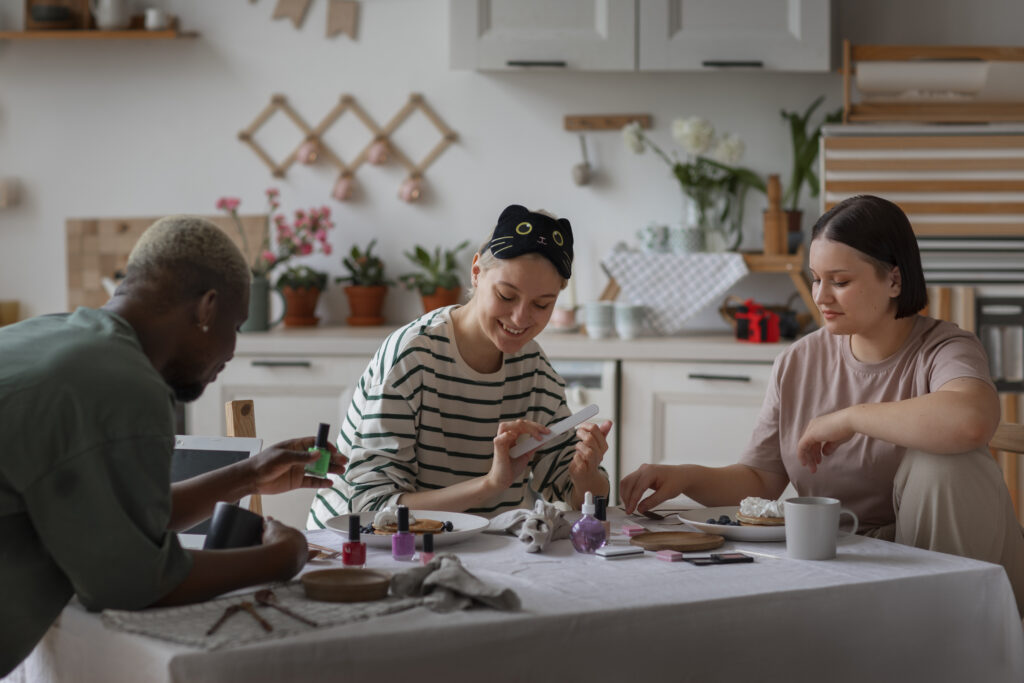
The conceptual foundations of collaborative art projects are rooted in the synergistic potential of collective creativity, where diverse perspectives catalyze the emergence of innovative artistic expressions. By engaging in creative collaboration, artists and participants draw upon a rich tapestry of experiences and skills, forging connections that transcend traditional artistic boundaries. Such endeavors produce striking visual statements and embody a process that reflects the dynamic interplay of Art and Technology.
The AIDS Memorial Quilt exemplifies how personal narratives can coalesce into a powerful social commentary. At the same time, the CowParade illustrates the democratization of Artistic Expression through its global reach and inclusive participation. Similarly, the Inside Out Project leverages the ubiquity of technological tools to amplify voices and foster a global artistic dialogue. Moreover, murals and street art collaborations serve as a canvas for communal identity, vividly narrating the collective ethos of a locale.
Through these collaborative ventures, art becomes a conduit for shared experiences, challenging the notion of the solitary artist and embracing a more holistic vision of creativity. This paradigm shift towards inclusivity and pluralism in art underscores the transformative impact of collective endeavor on Artistic Expression and its resonance within society.
Ethics of Co-Creation
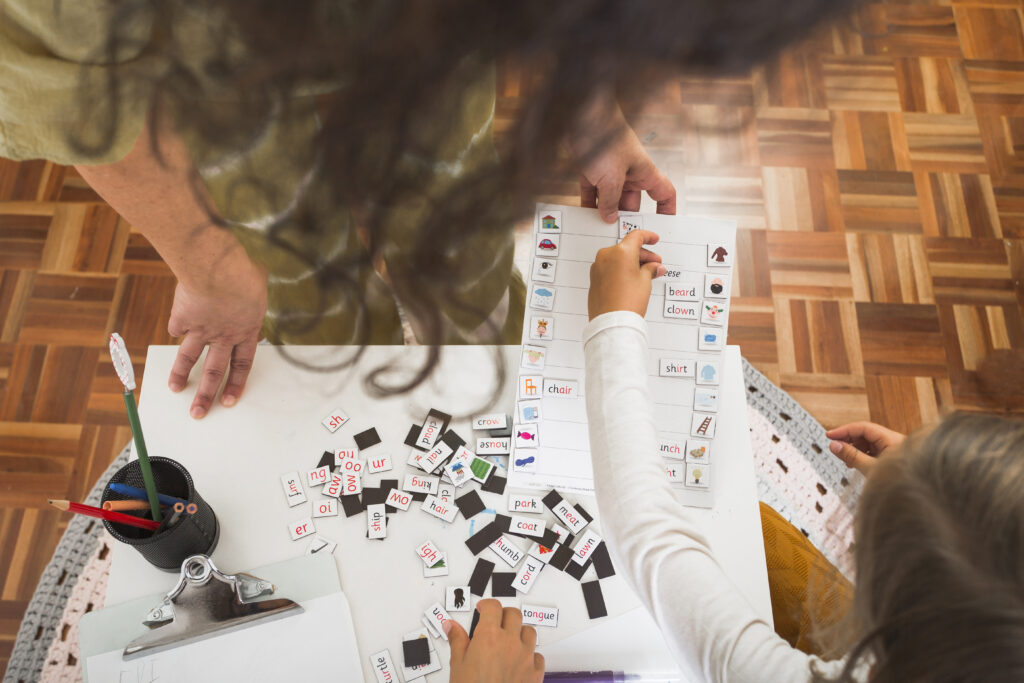
Looking into the realm of collaborative art, ethical considerations emerge as crucial to the integrity and success of co-creation, demanding meticulous attention to the respect and recognition of each participant’s contributions. When human creativity converges with artificial intelligence in the artistic process, the ethics of co-creation become a complex tapestry woven from both humanistic and technological threads. This fusion prompts a re-examination of traditional norms and the creation of new ethical frameworks.
- Clear Consensus: Ensuring all human or digital collaborators align on the artistic vision and ethical standards.
- Equitable Recognition: Fairly attributing achievements to all contributors, acknowledging the symbiosis between human ingenuity and AI’s capabilities.
- Cultural Sensitivity: Embracing diversity to foster art that resonates with authenticity and respects cultural narratives.
- Transparency in Process: Maintaining open communication channels regarding the roles and inputs of all co-creators.
Analytically speaking, the ethics of co-creation in art implores stakeholders to innovate ethical guidelines that address the equitable interplay between human and AI contributors. Articulately establishing these norms fortifies the collaborative experience and ensures that the final artwork is a testament to the ethical principles upholding it.
Selecting AI Partners
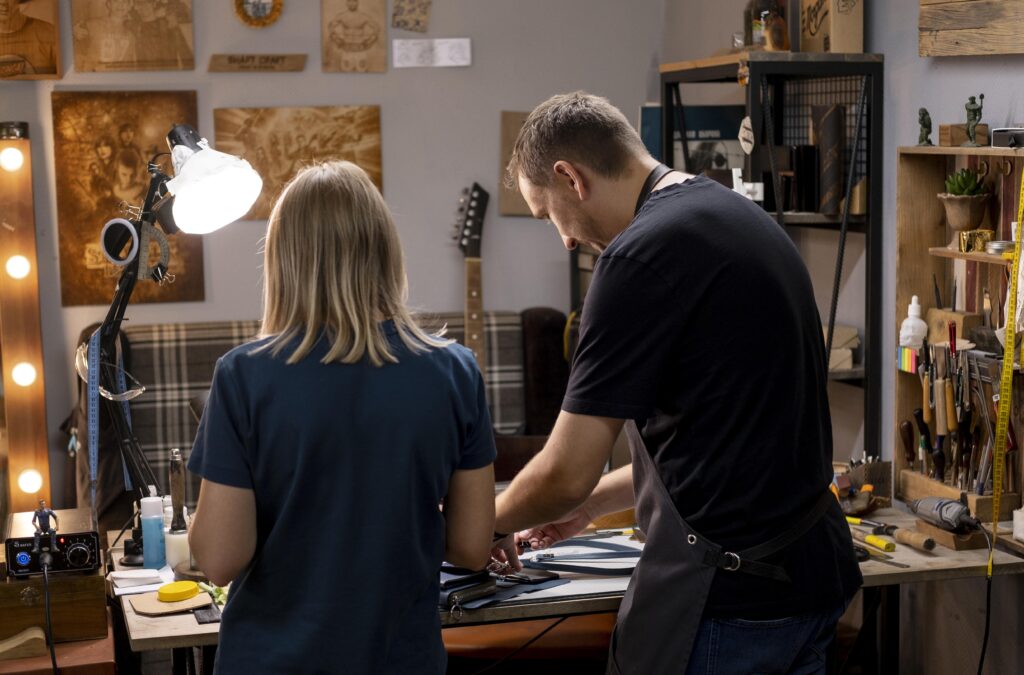
Building on the ethical frameworks established for collaborative art, choosing the right AI partner becomes a critical step that hinges on aligning artistic objectives and the technological prowess to achieve them. Artists working with AI must scrutinize their prospective computer-based collaborators for their capacity to contribute meaningfully to the creative process. This involves a thorough evaluation of the AI’s ability to assist with generating and synthesizing ideas, a cornerstone of artistic innovation.
An ideal AI partner should be capable of augmenting human creativity, providing new avenues for expression and divergent thinking. Technology should promote a synergy where human intuition is enhanced by AI’s data-driven insights, potentially leveraging computer vision to perceive and interpret visual content in novel ways. The AI’s role is not to replace the artist but to serve as a catalyst for expanding the creative landscape.
Moreover, the selected AI should facilitate a collaborative environment conducive to co-creation, where artists, technologists, and other stakeholders can seamlessly exchange ideas. It should encourage the exploration of diverse artistic perspectives, creating a fertile ground for cross-pollination and groundbreaking artistry. This collaborative creativity, supported by AI, is pivotal in the evolution of contemporary art within a technology-integrated society.
Designing the Process
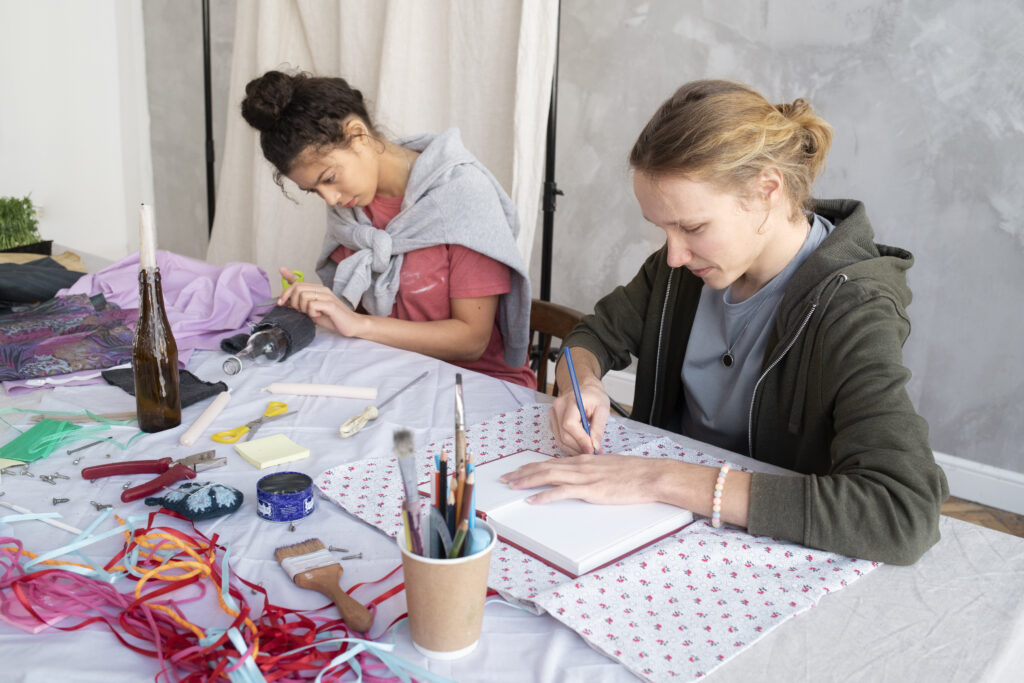
Crafting a practical framework for collaborative art projects is essential, as it lays the groundwork for the seamless fusion of diverse talents and ideas. An innovative process design is not only about structuring collaboration but also about harnessing the collective intelligence of the participants. This involves leveraging digital tools to facilitate communication and idea synthesis, ultimately enhancing the art project’s potential.
Analytically, the process must be agile enough to adapt to new inputs, allowing artists and collaborators to explore new creative frontiers.
Designing the process necessitates envisioning the following elements:
- Structured yet flexible frameworks that adapt to the dynamism of creative exploration.
- Clear communication channels to ensure that every voice is heard and valued.
- Diverse roles and responsibilities that recognize and utilize the unique strengths of each collaborator.
- Innovative evaluation techniques that refine ideas while nurturing the creative process.
Case Studies Analysis
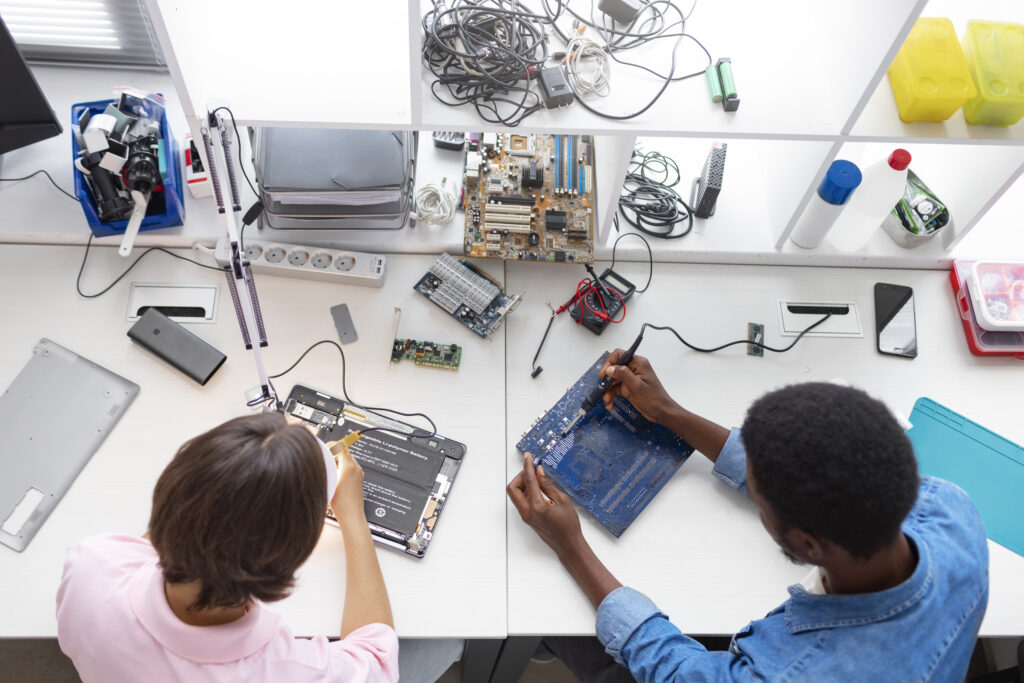
In assessing case studies of collaborative art projects, we focus on disentangling the factors that contribute to these ventures’ success and the complexities they encounter.
The interplay between human creativity and artificial intelligence in artistic collaboration emerges as a critical study area with implications for innovation and interdisciplinary practice.
Through rigorous analysis, we aim to distill actionable insights that can guide future projects to navigate challenges and optimize collaborative synergy.
Analyzing Collaborative Success Stories
Exploring the triumphs of collaborative art initiatives offers insightful revelations into how these collective endeavors enhance cultural dialogue and community engagement. The synergy between human and nonhuman elements in these projects often results in innovative and unexpected outcomes.
For instance, Harold Cohen’s creation of AARON, a computer program capable of generating artwork in real-time, exemplifies the fusion of technology and human creativity.
The following examples further illustrate the power of collaborative art:
- The AIDS Memorial Quilt stitches together personal loss and collective memory.
- CowParade’s vibrant fiberglass cows are a pasture of public engagement and charity.
- Inside Out Project’s monumental faces, pasted narratives echoing global diversity.
- Murals, the urban canvas is reflecting societal heartbeat in vivid strokes.
These projects underscore the potential of collaborative art to transcend individual expression, catalyzing a shared experience that resonates with communities in real-time.
Challenges in Human-AI Art
Navigating the complex intersection of human ingenuity and artificial intelligence, the challenges in human-AI art are multifaceted, ranging from ethical considerations to the intricacies of creative partnership.
The analysis of case studies reveals that while AI can augment human creativity, it also poses risks of embedding biases within artistic expressions. Artists collaborating with AI must critically assess the influence of such systems on their creative processes.
Moreover, ensuring that the collaboration enhances rather than dilutes the human element in art is paramount. These studies demonstrate the importance of a synergistic relationship where both humans and AI contribute uniquely to the creative endeavor, balancing the innovative potential of technology with the nuanced, subjective sensibilities of artists.
Audience Engagement Strategies
Audience engagement serves as the lifeblood of collaborative art projects, transforming passive viewers into active participants through various innovative strategies. Effective engagement enriches the experience and expands the reach of artists to share their work with a global audience. We can identify key strategies that foster a dynamic interaction between the artwork and its viewers by analyzing current engagement practices.
- Interactive elements that invite the audience to become a part of the art narrative.
- Social media campaigns that create a digital dialogue around the artwork, allowing instant feedback and shared experiences.
- In-person events such as workshops or talks demystify the creative process and invite curiosity.
- Technological integrations, like augmented reality, offer a multi-sensory immersion, deepening the connection between the audience and the art.
These strategies showcase a shift towards a more inclusive art world where the audience is not just a spectator but a co-creator. By leveraging these tools, artists can build a community around their projects, encouraging an ongoing conversation that transcends geographical and cultural boundaries.
The result is a living artwork that constantly evolves with each new interaction and is a testament to the collaborative spirit of human and artificial intelligence in art.
Overcoming Technical Challenges
In addressing technical challenges within collaborative art projects, the integration of generative AI proves instrumental in bridging creativity gaps that often impede collective innovation.
This technology not only streamlines communication, ensuring a seamless exchange of ideas among collaborators but also propels diverse artistic visions to converge them into a coherent whole.
Bridging Creativity Gaps
Addressing technical hurdles in collaborative art projects often necessitates a synergy between artistic vision and engineering ingenuity. This fusion creates a dynamic platform where individuals from diverse backgrounds can unite their expertise to push the boundaries of what is possible.
Consider the following:
- Integration of virtual reality (VR) tools that enable artists to visualize and manipulate digital elements in a three-dimensional space.
- Development of intuitive software interfaces that facilitate seamless interactions between creators and complex machinery.
- Custom-built hardware solutions that extend the tactile feedback necessary for artists when engaging with robotic counterparts.
- Interdisciplinary research project teams focused on refining the dialogue between human intuition and machine precision.
Enhancing Communication Efficiency
Building on the synergetic relationship between artistic expression and technological advancement, enhancing communication efficiency becomes paramount in overcoming the technical challenges inherent in collaborative art projects. Generative AI, central to this endeavor, would allow for seamless integration of diverse perspectives, effectively reducing expertise bias. This paves the way for computer art created using collective intelligence, ensuring a rich tapestry of shared ideas. Innovative tools foster creativity by encouraging thinking outside the box, which is critical for co-creation. By augmenting human creativity, these technologies enhance the very fabric of collaborative art-making.
| Enhancing Features | Emotional Impact |
|---|---|
| Diverse Perspectives | Freshness |
| Expertise Bias Reduction | Openness |
| Outside-the-Box Thinking | Curiosity |
| Collective Intelligence | Connectedness |
| Human Creativity Augmentation | Wonder |
Project Sustainability and Growth
Ensuring the longevity and development of collaborative art projects necessitates a strategic approach to secure funding, engage stakeholders, and continually assess and adapt to the evolving artistic landscape.
Project sustainability and growth hinge on the ability to forge a path considering financial stability while simultaneously nurturing the creative essence that defines such endeavors.
- Securing diverse funding sources: A robust financial strategy combines grants, sponsorships, and crowdfunding to create a stable fiscal foundation.
- Community engagement and partnership building: Cultivating relationships with local organizations, art collectives, and educational institutions to share resources and audiences.
- Continuous project evaluation: Implementing feedback mechanisms and impact assessments to fine-tune the collaborative process and amplify artistic outcomes.
- Adaptability to art trends and needs: Staying abreast of the latest movements in art to ensure the project’s relevance and appeal to a dynamic cultural audience.
In an analytical vein, project sustainability and growth are not mere endpoints but ongoing processes requiring innovative thinking and articulate execution. They must encapsulate the essence of art, embody the spirit of sharing and collaboration, and remain agile to the ever-shifting tapestry of human and artificial creativity.
FAQs
How can artists initiate collaborative projects with AI?
Artists can initiate collaborative projects with AI by exploring available tools, experimenting with AI models, and participating in AI art communities. Collaboration often starts with a willingness to explore the possibilities offered by AI in the context of art.
Can collaborative art projects with AI be showcased in traditional art spaces or exhibitions?
Yes, collaborative art projects with AI can be showcased in traditional art spaces and exhibitions. Many artists and galleries are embracing the integration of AI-generated content into the art world, sparking conversations about the intersection of technology and creativity.
What is the role of interpretability and explainability in AI-generated collaborative art?
Interpretability and explainability are essential considerations, mainly when AI systems contribute to collaborative art projects. Artists may need tools that allow them to understand and interpret the decisions made by the AI, fostering a deeper connection between the human and artificial collaborators.
Can collaborative art projects with AI inspire new forms of artistic expression?
Yes, collaborative art projects with AI have the potential to inspire new forms of artistic expression. The fusion of human creativity and AI capabilities often leads to exploring unconventional ideas, pushing the boundaries of traditional artistic practices.
How can artists navigate intellectual property issues in collaborative projects with AI?
Navigating intellectual property issues involves being aware of ownership rights, understanding licensing agreements, and clearly defining the roles of human and AI contributors. Artists may need to establish guidelines to address these considerations in collaborative art projects.
